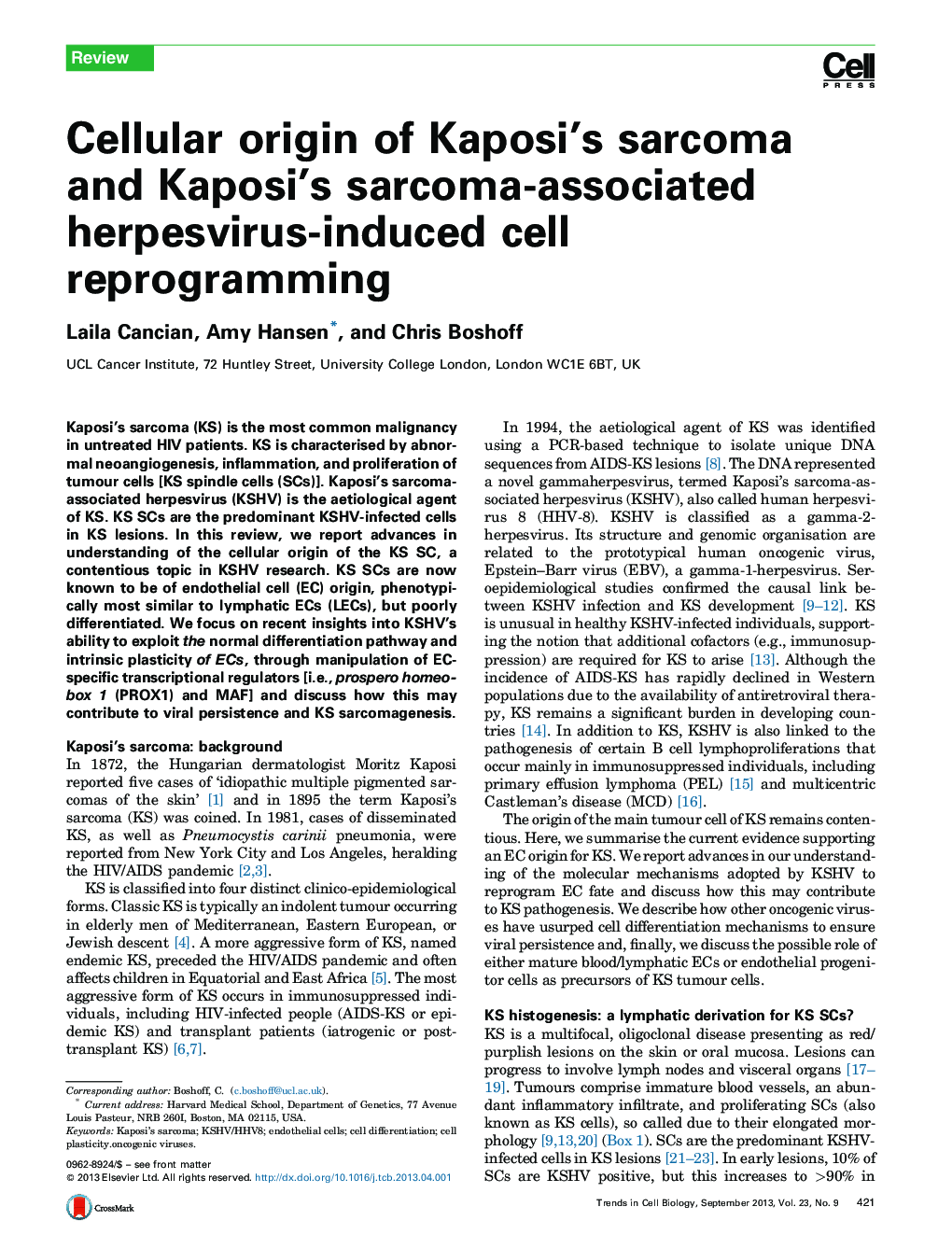| Article ID | Journal | Published Year | Pages | File Type |
|---|---|---|---|---|
| 2204456 | Trends in Cell Biology | 2013 | 12 Pages |
•KS SCs are the predominant KSHV-infected cells in KS lesions.•KS SCs are of endothelial cell origin and are genotypically similar to LECs, but are poorly differentiated.•KSHV causes transcriptional reprogramming of mature ECs by targeting EC-specific TFs.•KSHV-driven cell fate reprogramming may contribute to viral persistence and KS sarcomagenesis.
Kaposi's sarcoma (KS) is the most common malignancy in untreated HIV patients. KS is characterised by abnormal neoangiogenesis, inflammation, and proliferation of tumour cells [KS spindle cells (SCs)]. Kaposi's sarcoma-associated herpesvirus (KSHV) is the aetiological agent of KS. KS SCs are the predominant KSHV-infected cells in KS lesions. In this review, we report advances in understanding of the cellular origin of the KS SC, a contentious topic in KSHV research. KS SCs are now known to be of endothelial cell (EC) origin, phenotypically most similar to lymphatic ECs (LECs), but poorly differentiated. We focus on recent insights into KSHV's ability to exploit the normal differentiation pathway and intrinsic plasticity of ECs, through manipulation of EC-specific transcriptional regulators [i.e., prospero homeobox 1 (PROX1) and MAF] and discuss how this may contribute to viral persistence and KS sarcomagenesis.
